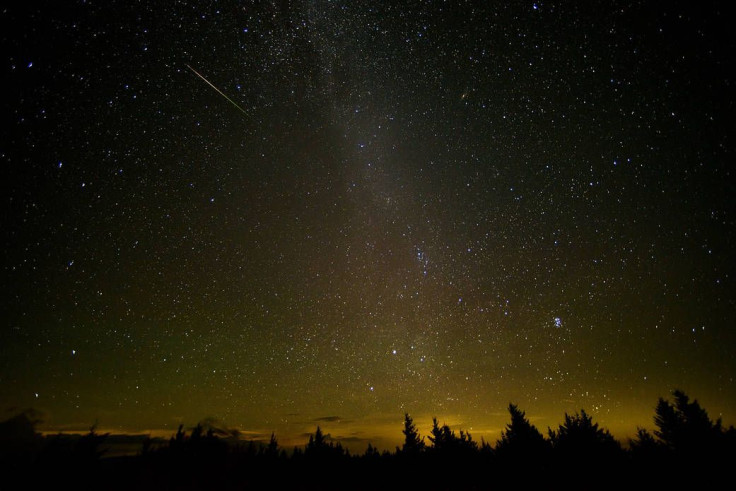Perseid Meteor Shower Is Peaking This Week; Here's Why You Should Not Miss It
KEY POINTS
- The Perseids are often the "most impressive" meteor showers of the year
- This year's sky event will be a good one as the moonlight won't block the view
- This may be the best chance for summer skywatching "for a few years": NASA
The Perseid meteor shower is peaking this week. This year is said to be a good one for this much-awaited sky event.
The Perseids are active from mid-July to late August each year and they are said to be the "most impressive" meteor shower of the year in the Northern Hemisphere. Besides producing high rates of meteors, the sky event takes place in August when weather conditions are ideal for skywatching.
This year, the Perseids' peak will be on the evening of Aug. 11 to the early morning hours of Aug. 12. Fortunately for skywatchers, they will occur on an evening when the moon will only be 13% full, so its light won't interrupt the viewing. As the American Meteor Society (AMS) explained, the strength of the display of the Perseids depends on the lunar conditions.
The evening of Aug. 12-13 may also be another excellent night for viewing, NASA said. According to the agency, this year's event may be skywatchers' "best chance" to view the Perseids in a while since the next peak will take place on a full moon in 2022 and on a waning crescent moon in 2023.
What Can Skywatchers Expect to See from the Perseids?
Skywatchers in the Northern Hemisphere may expect to see about 40 Perseid meteors per hour, assuming that one is on a spot that's far from light pollution.
"Under really dark skies, you could see almost one per minute near the time of maximum activity," NASA said.
However, those who will watch the sky event from the suburbs, the city or somewhere with brighter lights may spot fewer Perseids. People from the Southern Hemisphere may have the same experience.
The best time to watch the Perseids would be just before the break of dawn, the AMS said, as this is when the radiant where the Perseids appear to shoot from would be highest in the sky.
"This is usually around 04:00 local time. Experienced observers often say the hour between 03:00 and 04:00 is usually the best, not 04:00 to 05:00," Robert Lunsford noted as per AMS. "Perhaps this is due to fatigue as experienced observers have watched for several hours by then and may have trouble staying alert."
Those who will watch the skies during the evening hours, while the radiant is still low in the sky, may see only little activity since most of it will be out of the line of sight. But the Perseids that appear at this time are rather "special," Lunsford noted, because they "last much longer" and travel longer distances than the ones in the morning hours.
Tips for Skywatching
Those who would like to catch a glimpse of this year's Perseids need only to find a dark location where they can have a view of the sky, lie down with feet facing toward the north and look up to begin watching the show, NASA noted.
As mentioned, it's important to stay away from bright lights, including light from smartphones and other gadgets. People should also give their eyes about an hour and a half to adjust to the darkness. Afterward, they may begin to see the meteors appearing to radiate from around the constellation Perseus.
"The brightness of your sky is everything in meteor observing – you have to get away from the lights!" Bill Cooke of NASA Meteoroid Environments Office said.
For those who are in a location where the Perseids are not visible, they can still catch a glimpse of it as NASA will hold a live stream of the event via its Facebook, Twitter and YouTube.

© Copyright IBTimes 2025. All rights reserved.






















